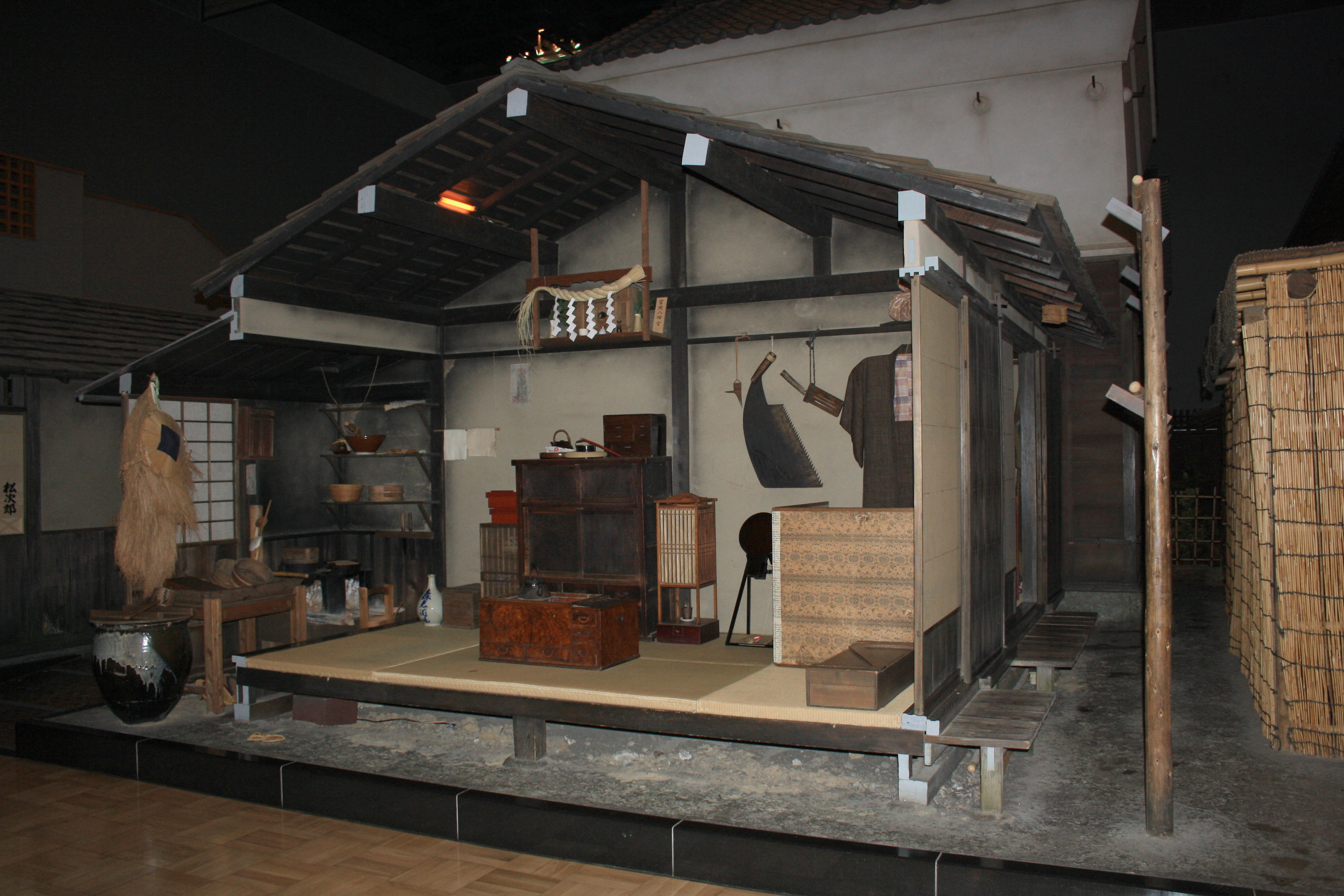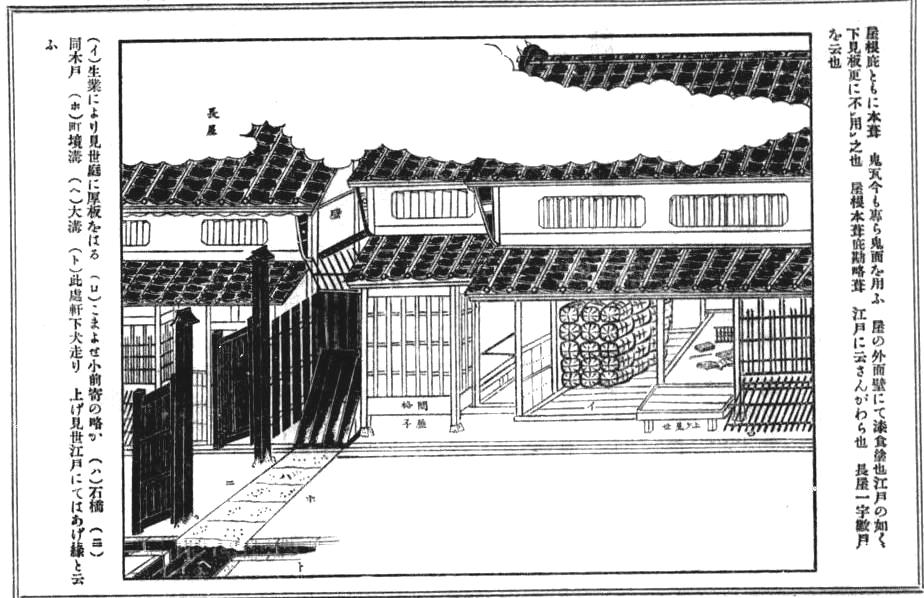Nagaya (house) on:
[Wikipedia]
[Google]
[Amazon]

 Nagaya (長屋, "longhouse") is a type of
Nagaya (長屋, "longhouse") is a type of

 Nagaya (長屋, "longhouse") is a type of
Nagaya (長屋, "longhouse") is a type of rowhouse
In architecture and city planning, a terrace or terraced house ( UK) or townhouse ( US) is a form of medium-density housing that originated in Europe in the 16th century, whereby a row of attached dwellings share side walls. In the United State ...
, which was typical for Edo period
The or is the period between 1603 and 1867 in the history of Japan, when Japan was under the rule of the Tokugawa shogunate and the country's 300 regional '' daimyo''. Emerging from the chaos of the Sengoku period, the Edo period was characteriz ...
in Japan.
Nagaya was a long housing complex under the same ridge, one or two stories high, divided into small compartments for rent. The well, toilet and waste facilities were shared. Except for a bedroom, each household only had a kitchen. Historically, similar houses were built around a rich manor or castle for low-ranking samurai
were the hereditary military nobility and officer caste of medieval and early-modern Japan from the late 12th century until their abolition in 1876. They were the well-paid retainers of the '' daimyo'' (the great feudal landholders). They h ...
. Later they accommodated both samurai and commoners. At the ends of the building shops were located typically, their owners lived in adjacent rooms.
The wealthier tenants lived in the rooms facing the street. Usually the tenants of a ''nagaya'' didn't have a family. The rooms had an earthen floor, with a size of 8-10 square meters.
Nagaya were also known as yakeya (, , burning houses), due to their tendency to catch fire.
If a gateway was located in one section, such a house was called ''nagaya mon'' (長屋門, longhouse-gate).
See also
*Minka
are vernacular houses constructed in any one of several traditional Japanese building styles.
In the context of the four divisions of society, were the dwellings of farmers, artisans, and merchants (i.e., the three non-samurai castes). This c ...
(vernacular houses)
* Machiya
are traditional wooden townhouses found throughout Japan and typified in the historical capital of Kyoto. (townhouses) and (farm dwellings) constitute the two categories of Japanese vernacular architecture known as (folk dwellings).
orig ...
(a larger townhouse)
References